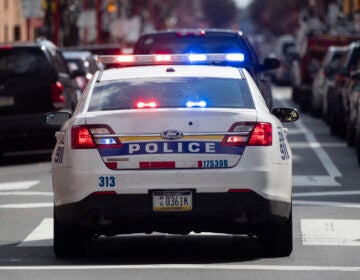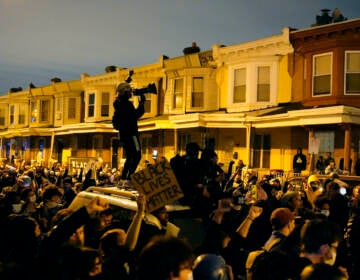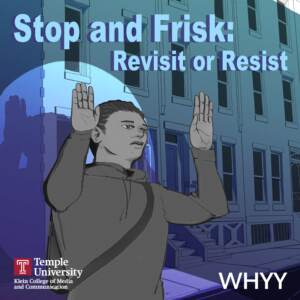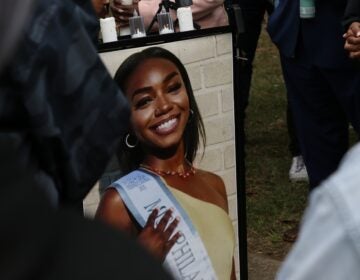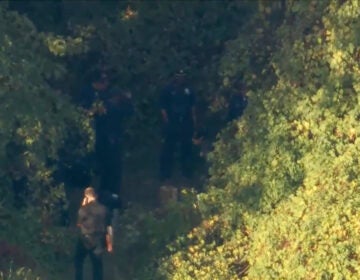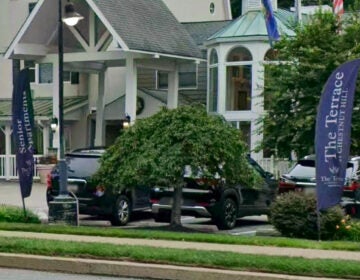Policing is changing in some Philly neighborhoods. This community program is spreading the word
A PPD pilot program changes the way police officers handle minor violations. In response, the ACLU has community ambassadors informing the public about their rights.
Listen 3:35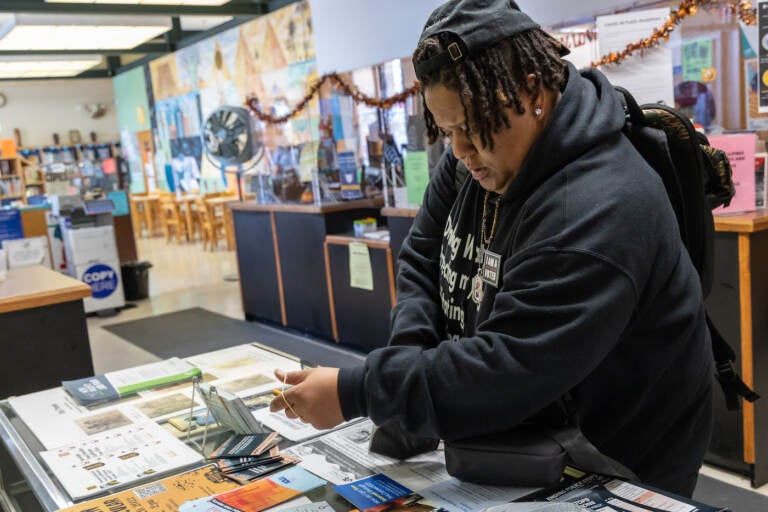
Di Hargrove, an ACLU community ambassador, hands out 'Know Your Rights' pamphlets and many other resources at and around the the Cecil B. Moore Library in North Philadelphia. (Kimberly Paynter/WHYY)
How do you feel about stop and frisk (and policing more broadly) as an answer to Philly’s gun violence crisis? Get in touch.
Di Hargrove rolled up to the Cecil B. Moore Library in North Philadelphia on a recent weekday morning, parked, and popped her trunk. She was hauling a stash of resources: masks, hygiene products, voter guides, and job applications.
“Back in the day, you used to have rappers — they used to push CDs out of the trunk of the car and hustle,” she said. “So this is how I hustle, you know what I mean? I do it the same way.”
Hargrove is part of a team of community members hired by the ACLU of Pennsylvania to keep residents up-to-date on everything from their polling place to their rights if they’re stopped by police. It’s an attempt to address racial disparities in who officers detain, and reduce the likelihood of interactions between police and community members escalating to violence.
“The ACLU police diversion team is the accountability partner for the community,” Hargrove said.
She carries a pocket-sized pamphlet entitled “Know Your Rights,” which describes when Philadelphia police officers can or cannot stop someone on the street and ask for ID or search their body. It’s designed to address stop and frisk, a controversial policing practice that has been disproportionately applied to Black Philadelphians, according to police data.
Learn more about the history of the strategy by listening to “Stop and Frisk: Revisit or Resist.”
There has been a groundswell of community activism around policing in the last decade, spurred in part by police killings of Black men including George Floyd, Michael Brown, and Philando Castile. Police use of force is the sixth leading cause of death for young Black men in the U.S., according to a study from the University of Michigan, Rutgers University, and Washington University.
Social justice activists have pushed for increased monitoring of police interactions, particularly with people of color. It’s taken the form of programs like Hargrove’s, as well as oversight commissions, and apps that allow people to easily record and save their interactions with officers.
Criminal justice experts say this movement could usher in a new era of policing — one that improves relations between citizens and the people sworn to protect them.
John Monaghan, a law enforcement initiatives consultant for the nonprofit Center for Policing Equity, said stop and frisk can be part of public safety strategy, but only if departments keep better track of the impacts.
“Adjust our policies, our procedures and our training around that, then we can have better outcomes and do work that reduces harm,” Monaghan said.
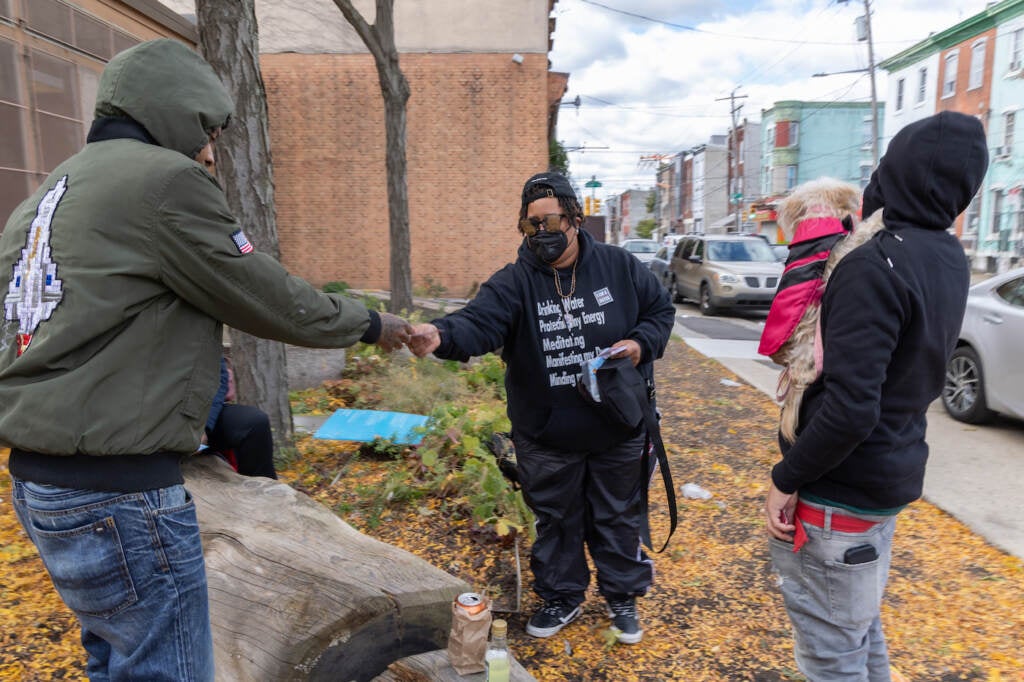
A new way of policing
The ACLU of Pennsylvania created Hargrove’s role in response to a new pilot program that changes the way police handle minor offenses. A federal district court ordered the pilot in 2021 to remedy racial disparities in police stops, according to the ACLU of Pennsylvania. The change follows a 2010 class action lawsuit that determined that police were using stop and frisk, which allows officers to stop anyone they have reasonable suspicion to believe has committed, is committing, or is about to commit a crime, disproportionately to stop Black and Latino men without justification.
The new policing pilot began in Philadelphia’s 14th police district in 2021 and expanded to five additional districts this past spring. It instructs officers not to stop and frisk people for 11 minor offenses, including loitering, public urination, or smoking marijuana. Officers must instead make a verbal request for the person to cease what they’re doing. If the citizen complies, the officer must move on or the person can walk away. If the person continues with the offense, the officer can formally stop them or issue a citation for the conduct.
“Seeing as the pilot program is still in its infancy, the PPD does not have sufficient data that can speak to the effectiveness of the approach at this time,” a department spokesperson said in an email. “The purpose of the program is to address racial disparities during police/civilian encounters.”
Julie Zaebst, a senior policy advocate for ACLU of Pennsylvania, said the goal is to cut down on potentially harmful situations and reduce the number of Black men incarcerated for minor crimes.
“There is no reason why somebody smoking weed out on their stoop should result in a violent interaction with the police,” she said. “We know that’s a danger and we know that’s especially a danger for Black folks and other people of color.”
So Hargrove walks through neighborhoods hardest hit by gun violence and spreads the word about the rule change. She also teaches them how to slowly and carefully get the pamphlet out of their pocket if an officer confronts them.
”You have to have calm communication,” she said. “Patient, slow communication…Any conversation with a police officer nowadays is scary. So I would tell them your every move.”
During a recent outing, Hargrove walked into a gas station and struck up conversation with resident Timothy Mack, a towering Black man in an oversized blue sweatshirt and a backwards ball cap. He told her he’s been stopped by police multiple times and he knows how to talk to an officer.
“You’ve got to tell me what crime, the suspicion of what crime,” Mack said. “If you can’t tell me that, I’m free to go.”
He believes officers don’t get adequate training on how to de-escalate situations, so it’s up to citizens to do that work.
“Once you let them know that you know what they’re talking about, they leave you alone,” Mack said. “What we need to do is talk to them.”
The Philadelphia Police Department has a training course that focuses on “the core principles of de-escalation, crisis communication, and tactics” that is updated annually, according to a 2021 newsletter from the U.S. Justice Department’s Office of Community Oriented Policing Services.
Philadelphia Police Commissioner Danielle Outlaw explained in the newsletter that the department has expanded its relationship with the city’s Department of Behavioral Health and Intellectual Disability Services to be able to make mental health referrals for people in need.
Outlaw did not make herself available for an interview request to discuss stop and frisk.
A catch-22
Monaghan, with the Center for Policing Equity, says it’s “unfortunate” that residents of color need “a specific set of instructions in order to stay safe with the police department.”
“It should be a call to action for police departments to realize that something’s very, very broken,” he said.
The number of stop-and-frisk encounters in Philadelphia has dropped steadily since 2019, according to police data.
But some law enforcement officers feel that’s hindering their ability to find people who might go on to commit violent crime.
Sgt. Michael Spicer, who was accused of beating and stealing money from drug dealers in 2012 and then acquitted in 2015, said officers aren’t targeting Black men only because of their skin color.
“The predominant persons that are doing shootings and violence are young Black males,” he said. “We don’t target 70-year-old Asian females for a reason. They are of no interest to us to curb violence.”
Four in five arrestees for shootings have been Black since 2015, and most are between the ages of 18 and 30, according to a report from the city’s 100 Shooting Review Committee.
“The card that gets played against us is that we’re targeting a certain race or color or age…In all actuality, we are because they’re the persons that are responsible for the violence,” Spicer said. “It’s a Catch-22 on our end. So, we’re damned if we do, we’re damned if we don’t. If the leash were a little better or a little more lax, we would be able to do more.”
Keeping watch
In response to concerns about use of force, the Philadelphia Police Department — like many law enforcement agencies across America — has instituted the use of body-worn cameras to hold officers accountable. Roughly half of Philadelphia’s uniformed officers wear cameras. However, critics have pointed out that officers sometimes misuse them, and Pennsylvania law makes the footage difficult to access.
“Any professional sports team would be crazy not to go back and look at camera footage of the games,” Monaghan said. “So, it’s not just the camera on the officer’s chest or in the car, it’s where does [the recorded footage] go? Who stores it? Who reviews it? How does it get used?”
Philadelphia also has a Citizens Police Oversight Commission, which publishes reports about police practices and their impacts, and helps residents file complaints against officers.
In addition to transparency efforts coming out of police departments, there are a slew of digital applications designed to help citizens understand their rights and track officers’ actions, in hopes of preventing situations from escalating.
Examples include:
- Mobile Justice: App created by the ACLU to let people record witness videos and then submit an incident report to the ACLU immediately. This app also includes detailed information about people’s legal rights if they’re stopped by police.
- Legal Equalizer: App captures police encounters after the user is pulled over. It also notifies loved ones and provides basic legal information.
- Cop Watch Video Recorder: App automatically begins filming and sending footage to the cloud. This is meant to be a safeguard in case the cop seizes or breaks the user’s phone.
There hasn’t been much research on whether these witness apps reduce instances of police brutality. Nationally, the number of fatal police shootings has risen steadily since 2015 and reached a record high in 2021, according to a Washington Post analysis.
Hargrove, with the ACLU’s community ambassador pilot, said it’s important for citizens to be “eyes and ears” on the police department.
The ACLU of Pennsylvania is currently tracking the pilot program, and reports that since it launched in the 14th police district in 2021 there have been no incidents there where the police escalated an encounter beyond the request to stop the illegal act.
Hargrove believes sharing information about the illegal use of stop and frisk has led to more informed, calmer communication across the board.
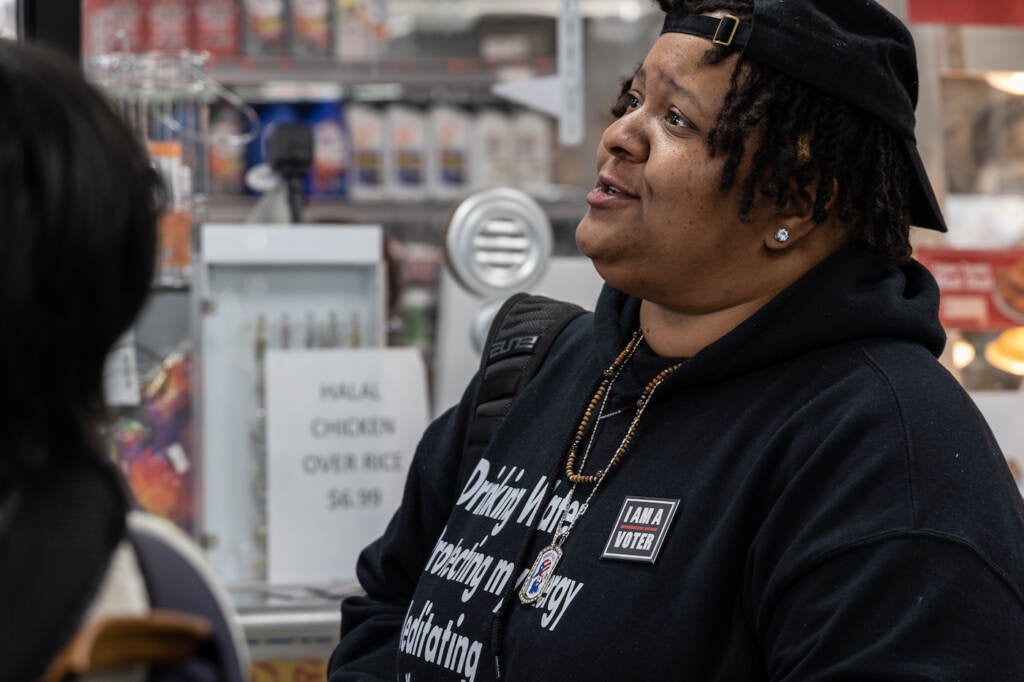
“We’re not against [the police],” she said. “We’re holding them accountable in knowing how to control themselves, how to control their behaviors, and how they communicate. Things can escalate on both sides because there are two humans involved. Everybody has to remember that.”
Hargrove has plans to create role play videos that model positive interactions between police and citizens, and make them accessible by QR code.
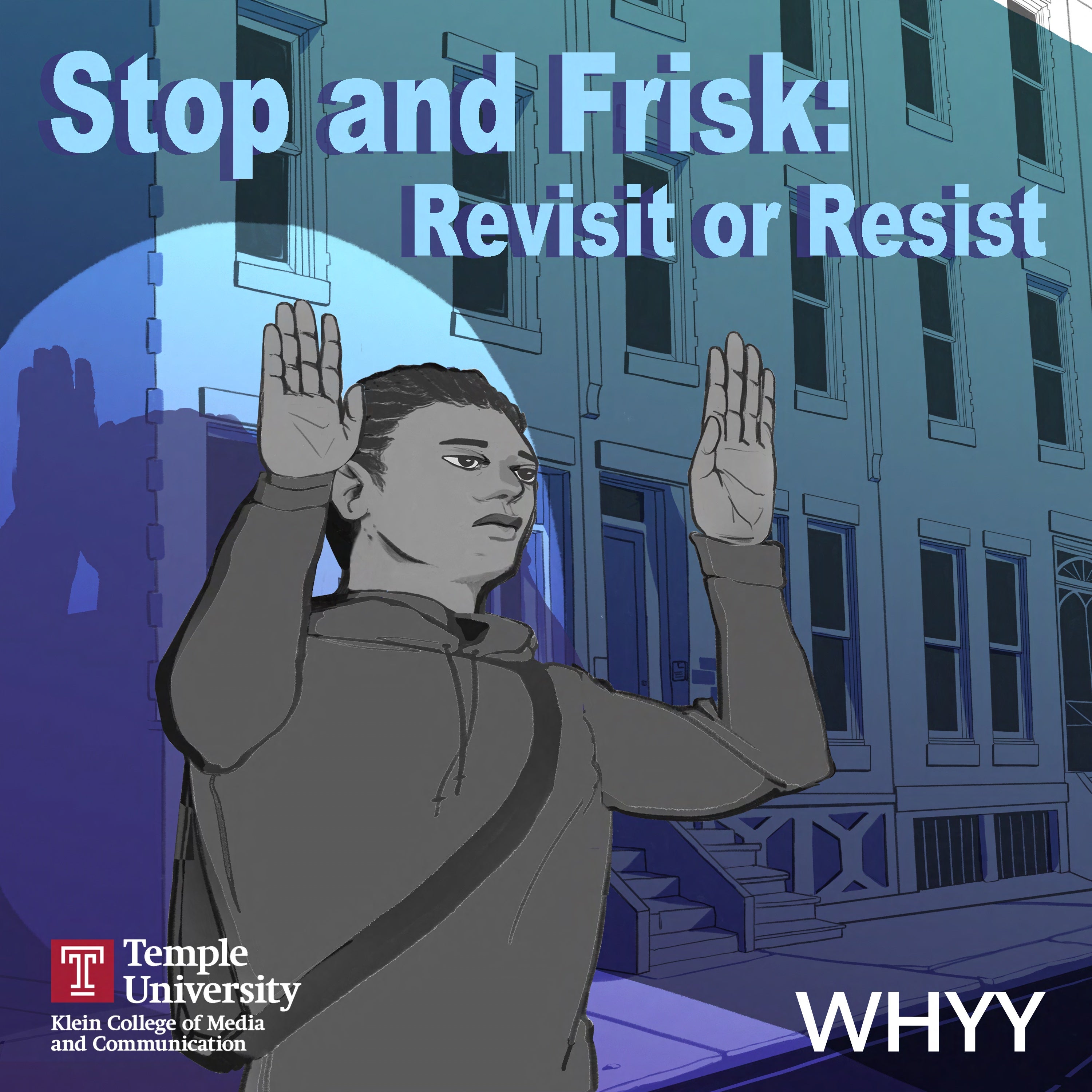
Stop and Frisk: Revisit or Resist
WHYY is your source for fact-based, in-depth journalism and information. As a nonprofit organization, we rely on financial support from readers like you. Please give today.


